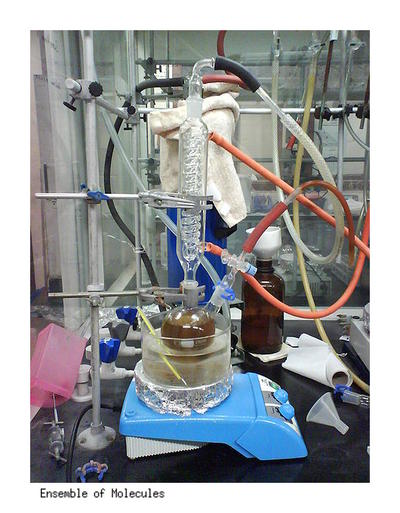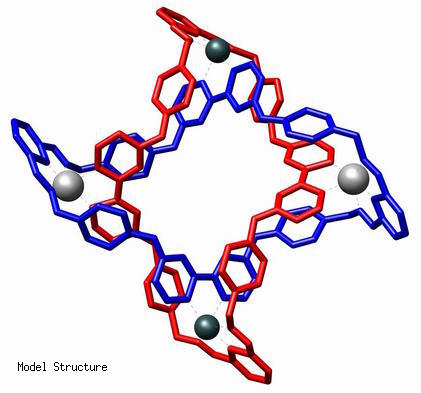Molecular Modeling Background:


Laboratory experiments typically involve an ensemble of molecules in a Boltzmann distribution of states. There may be only a few types of molecules, but each of these molecule types exists in large numbers.
In contrast, in molecular modeling, you often model only a single molecule or a small number of reacting molecules. Molecular modeling algorithms can explore the lowest energy state of your molecule and other interesting states. It is important to understand how these algorithms work so you can choose the appropriate method for your chemical question.
This series of web pages guides you through some basic concepts needed to interact with molecular modeling software. The goal here is not to explore theory in depth, only to give you a framework for understanding how chemical concepts are translated into software terminology.
Please consider each of the following concepts. Each one links to a webpage with some text and graphics introducing the concept. There are 1 or 2 simple exercises for each concept. You should do them as you go along because they are tied to the information just introduced. However, all of the exercise are also summarized in a single link below.
Basic Concepts and Exercises:
Degrees of Freedom:
In order to model a molecular system, we must specify its geometry. The number of variables required to specify the geometry is called the degrees of freedom. Please read this section and do the associated 2 exercises. You can also watch this optional video.Potential Energy Surface:
Every molecular geometry has a corresponding energy. A potential energy surface depicts the relationship between energy and geometry. Often such depictions mask the complexity of the geometry. Please read this section and do the 1 associated exercise. Here's an optional video. And his whole playlist is excellent.Energy - Molecular Mechanics:
In order to model molecules, we need a way to calculate energy for a given geometry. We also need a way to systematically vary the geometry, and thus move around on the PES. We'll look at 2 ways to calculate energy, starting first with molecular mechanics. Please read this section and do the 1 associated exercise. Here's an optional video.Energy - Quantum Mechanics:
Quantum mechanics approaches in molecular modeling usually started with the Schrodinger equation. Please read this section and do the 1 associated exercise. Here are some optional videos on Hartree Fock (HF), post-HF methods, and DFT.Geometry - Minimization:
In order to move from a starting geometry to a better geometry, we usually do a minimization. Please read this section and do the 1 associated exercise. Here's an optional video.Geometry - Coordinate Scan:
If we want to explore the geometry systematically, we can do a coordinate scan. Please read this section and do the 1 associated exercise.Geometry - Conformational Search:
If we want to find all of the low energy conformations for a molecule, the best option is a Monte Carlo conformational search. Please read this section and do the 1 associated exercise. Here's an optional video (see especially the part starting at 7:40). This is the second video in a series, here are links to the first and third.Exercises:
Each concept above included some exercises. They are summarized here. It is fine to just write your answers on a piece of paper and email us photos or scans of that paper. Or put your answers into a google doc or word file, and send to mgcf@berkeley.edu. In a few places, we ask you to sketch something and it is fine to use images you find on the web, but please add a few sentences to describe the image and answer the specifics in the related question.